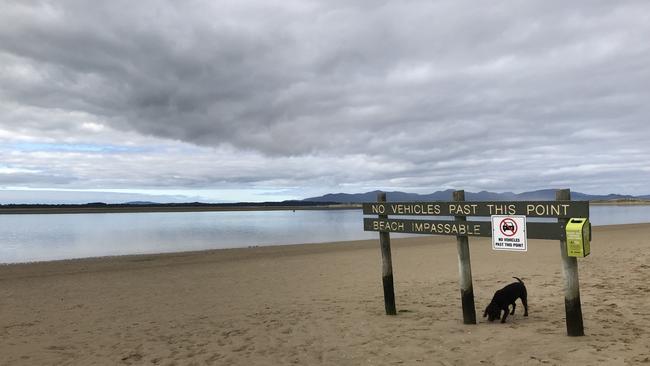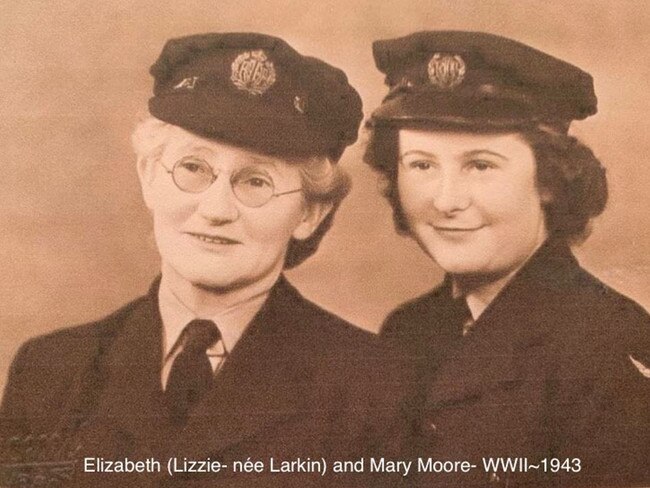Sandy Point skeleton mystery solved after 95 years
A forensics breakthrough has identified a man who drowned in 1928 in a case that became known as the Sandy Point skeleton.

Victoria
Don't miss out on the headlines from Victoria. Followed categories will be added to My News.
It’s Christmas Day 2017. A snorkeller discovers a human skull on the ocean floor at Shallow Inlet, near Sandy Point in south Gippsland.
Remarkably, almost the entire skeleton is uncovered in a near perfect condition beneath the sand.
For years, this unidentified person would be known as the Sandy Point Skeleton.
But in a major Australian-first breakthrough this month, an elite team of Victorian Institute of Forensic Medicine (VIFM) specialists has identified the man, solving a near century-long mystery.

The skeleton belonged to World War I veteran and Gippsland father Christopher Luke Moore, who tragically drowned at sea in the late 1920s.
Historic police and coronial documents reveal Mr Moore was at Waratah Bay with his parents Cornelius and Charlotte, brother Francis, wife Elizabeth and toddler Mary when he got into difficulty in the waves on December 30, 1928.
A beachgoer tried to save him, but the tide was too strong.
“(Mr Moore) threw up his arms and disappeared under a big breaker and was never sighted again,” said a police report dated January 22, 1929.

Mr Moore’s father spent 10 long days searching the coastline for his son without success.
A fortnight later, on January 15, 1929, Mr Moore’s mandible – the lower jaw – washed up on the beach 6km east from where he drowned.
It is buried at a family plot at Meeniyan Cemetery and was the only known remnant of Mr Moore until a breakthrough discovery was made on July 20 this year.
The 95-year-old mystery was solved through DNA provided by his grand-niece Kathy.
“I was astounded,” she said.
“We have an answer at last.”

The road to answers has been exhaustive. VIFM used every known technique to identify the skeleton since its discovery. The breakthrough was made in a pilot program using forensic investigative genetic genealogy (FIGG).
The identification of human remains using FIGG has never before been done in Australia – and this case opens up the potential for the nation’s most challenging missing persons cases to finally be solved.
VIFM chief molecular biologist Dr Dadna Hartman said it was “a big milestone”.
“We still have in my office the whiteboard with the family tree,” she said. “It sends shivers down my spine when I remember my colleague Fiona Leahy turning to me and saying, ‘I think I know who it is’.”

“ (FIGG) is going to be really important for older cases and newer ones too where they have reached the end of the road.”
FIGG involves DNA samples from unknown deceased people being analysed against genetic profiles on publicly available ancestry databases.
When a match is recorded, researchers are able to build family trees going back generations to solve cases.
In the case of Mr Moore, he had DNA matches on his maternal and paternal side, with the final piece of the puzzle solved with Kathy’s saliva sample.

She learnt about the reinvestigation when a Bass Coast detective knocked on her door two weeks ago.
“I was in my dressing gown and ‘moccies’ and he said to me: ‘Don’t panic, it’s nothing recent … it’s something historical’,” Kathy said.
“The detective that knocked on my door was the same detective that attended the scene in 2017 when the skeleton was found. He borrowed the snorkeller’s gear and went into the water to find the skull himself.”
The detective spoke of the Sandy Point Skeleton and that new information indicated he could be a relative. Kathy immediately blurted out: “Christopher Luke Moore.”
For years, the family knew only rumours of his disappearance.
They thought he might have drowned while fishing alone and it was only through the forensic investigation that they learnt how he died in front of his family.
“The work (VIFM) has done is incredible,” Kathy said.
“They solved a family mystery for us.”
Mr Moore enlisted for the war aged 18, serving for more than 18 months as a gunner for the 10th Field Artillery Brigade.
Forensic anthropologist Dr Samantha Rowbotham was first to examine his skeleton in 2018.

The fact that it was almost completely intact was a “rare find”, especially given the ocean’s tidal movements and animal activity.
Dr Rowbotham’s examinations found the skeleton belonged to a Caucasian male who was about 170cm tall and died between the ages of 21 and 37.
Radiocarbon testing found a 95 per cent probability he lived between 1666 and 1942.
Dr Rowbotham said: “It’s a privilege to be able to return him to his family.”
Mr Moore’s skeleton will be laid to rest at the family plot in the near future.





